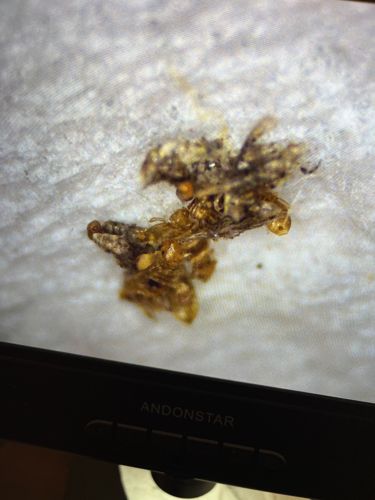Case-bearing Clothes Moth (Larva)
Scientific Name: Tinea pellionella
Order & Family: Order: Lepidoptera, Family: Tineidae
Size: Larvae can grow up to 10-15 mm (0.4-0.6 inches) in length, including their case. The case itself is typically 6-10 mm (0.24-0.4 inches) long. Adult moths have a wingspan of about 9-16 mm (0.35-0.63 inches).

Natural Habitat
Indoors, they are commonly found in dark, undisturbed areas such as closets, attics, under furniture, in storage chests, and carpeted areas. They thrive in places with high humidity and access to their food sources like woolens, furs, and feather products. Outdoors, they might be found in bird nests or animal burrows.
Diet & Feeding
The larvae of the case-bearing clothes moth feed primarily on natural fibers of animal origin, particularly wool, fur, feathers, hair, and sometimes silk. They can also consume lint, dust, and dried animal carcasses. They are considered scavenger feeders indoors.
Behavior Patterns
Case-bearing clothes moth larvae are known for spinning a silk case, often incorporating fibers from their food source, as they grow. They drag this case with them and can retreat into it when disturbed. Adults are poor fliers and tend to run rather than fly when disturbed. They are most active at night or in dimly lit conditions. The life cycle can take anywhere from two months to two years depending on environmental conditions (temperature, humidity, food availability).
Risks & Benefits
Potential risks include significant damage to textiles, clothing, carpets, and upholstered furniture made of natural animal fibers. They can be a serious pest in museums, homes, and storage facilities. They do not bite humans or transmit diseases. There are no known direct benefits to humans, but as decomposers, they play a minor role in breaking down natural animal fibers in ecosystems.
Identified on: 9/4/2025